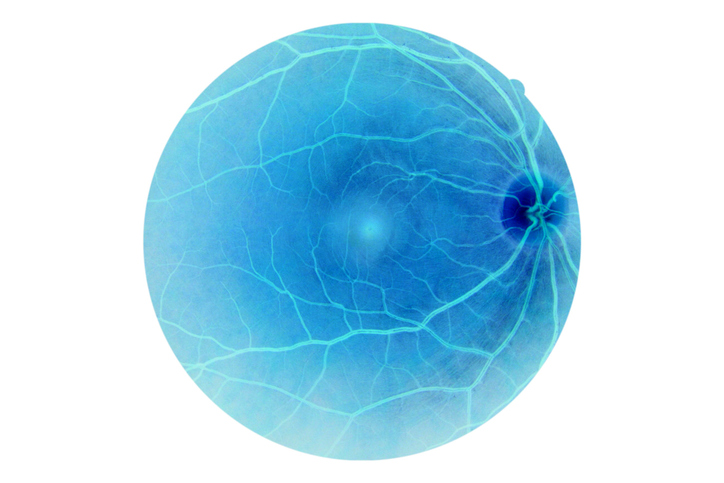
An RNA therapy from ProQR Therapeutics has failed a pivotal test in an inherited eye disorder, an unexpected setback to the biotech company’s most advanced program. According to the preliminary results, patients who received the experimental treatment, sepofarsen, showed essentially no difference compared to the control group.
The Phase 2/3 study in patients with Leber congenital amaurosis also flunked secondary goals assessing other measures of vision. Leiden, Netherlands-based ProQR said it will continue to analyze the data and present more details at a future medical meeting. Speaking on a conference call Friday, CEO Daniel de Boer expressed surprise and disappointment at the early data from the trial, named ILLUMINATE.
“We will figure out what happened with the sepofarsen ILLUMINATE trial, where we will leave no stone unturned,” de Boer said.
Leber congenital amaurosis (LCA) is a disease in which the photoreceptors of the retina degenerate or don’t function properly. The disease stems from genetic mutations; defects in the CEP290 gene lead to the most frequent and severe form, called LCA10. Those born with LCA10 typically lose vision in the first few years of life. There are no treatments for the disease’s underlying cause.
ProQR aims to treat LCA10 by correcting the genetic defect that causes it. Sepofarsen is an RNA therapy designed to restore the ability of the CEP290 gene to produce functional CEP290 protein. The treatment comes from a ProQR platform technology that has yielded produced five programs, all of them inherited retinal diseases that the biotech aims to treat with RNA therapies given as injections into the eye.

A Deep-dive Into Specialty Pharma
A specialty drug is a class of prescription medications used to treat complex, chronic or rare medical conditions. Although this classification was originally intended to define the treatment of rare, also termed “orphan” diseases, affecting fewer than 200,000 people in the US, more recently, specialty drugs have emerged as the cornerstone of treatment for chronic and complex diseases such as cancer, autoimmune conditions, diabetes, hepatitis C, and HIV/AIDS.
The pivotal Phase 2/3 test of sepofarsen enrolled 36 patients age 8 or older who were genetically confirmed to have LCA10 due to a CEP290 mutation. Those patients were randomly assigned to three groups: either a low or a high dose of sepofarsen, or a third group given a sham procedure mimicking an injection.
The main goal of the study was to measure best corrective visual acuity according to a widely used vision assessment in which a negative score indicates vision improvement, and a positive score indicates worsening vision. ProQR said that at the 12-month mark, the mean change in best visual acuity from baseline was -0.11 in the high-dose group and -0.13 in the low-dose arm. In the group of patients given a sham procedure, the mean change in score was -0.12.
The secondary study endpoints included a full-field stimulus test, which is a measure of the lowest flash of light that elicits visual stimulation, as well as performance on a mobility course. On these measures, ProQR also reported no difference between the treatment groups and the sham arm.
No serious adverse events were reported in the study and the RNA therapy was well-tolerated by patients. Chief Medical Officer Aniz Girach said that cataracts, cystoid macular edema, and retinal thinning were observed; these findings are consistent with what was reported in Phase 1/2 tests of sepofarsen. In that study, which enrolled five children and six adults, ProQR had reported “rapid and sustained improvement in vision” in the majority of patients, paving the way for the pivotal Phase 2/3 study. The 12-month data reported Friday are the first results from that three-year study, which will continue, de Boer said. In response to an analyst’s question about whether another sepofarsen study would be needed, de Boer said that ProQR won’t know until the company better understands the results from the current study.
“Everything is on the table,” de Boer said. “We can come back to you once we’ve done this analysis.”
Through the end of the third quarter of 2021, ProQR reported its cash position was €156.1 million, which the company estimates is enough to support operations through mid-to-late 2024. Between now and then, ProQR will press ahead with its other RNA therapies. Last year, ProQR reported positive Phase 1/2 data for ultevursen, an RNA therapy for Usher syndrome and retinitis pigmentosa. That therapy is now in Phase 2/3 testing. Another ProQR program, QR-504a, is in early clinical development for Fuchs endothelial corneal dystrophy type 3. Both studies are expected to report data later this year.
ProQR is also continuing to develop its Axiomer technology platform, which enables RNA editing. Though ProQR will use this technology to develop treatments for genetic eye diseases, the company is open to partnerships with companies interested in applying the technology to other therapeutic areas. Under a partnership with Eli Lilly, ProQR is using Axiomer to develop drugs for up to five targets in the liver and central nervous system.
De Boer batted down suggestions that the early Phase 2/3 results for sepofarsen in LCA10 affect the company’s other programs. He said ProQR has seen consistent results leading up to clinical testing and extension studies with multiple molecules produced by its technology.
“In our view, the outlier here is the ILLUMINATE results that we are representing today,” he said. “Therefore, we remain confident in the platform as such.”
Investors did not share de Boer’s optimism. Shares of ProQR sank more than 75% Friday to about $1.37 per share.
Photo: lightmemorystock, Getty Images












